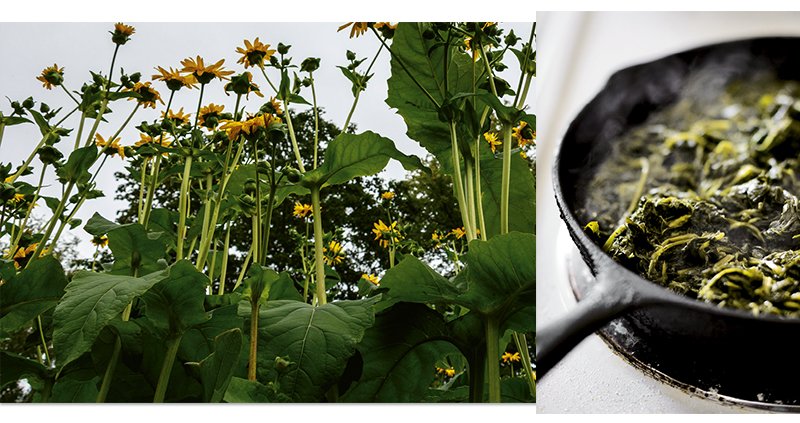Get to Know Sochan
Get to Know Sochan: Long valued by the Cherokee, this wild leafy green has lots to offer
GROW YOUR OWN: You don’t need a national forest to grow sochan; it should thrive in your own backyard. According to the experts at Asheville’s Sow True Seed, all you need is a plot with full sun to partial shade. Try sowing the seeds in fall (they need the cold of winter to germinate), or “stratify” the seeds in your fridge a few weeks before spring by placing them between layers of sod or sand. Harvest the slightly bitter greens in spring (try them steamed), or let them run wild for a vibrant floral show come summer.
Herbalists are increasingly touting the merits of sochan, a nutritional powerhouse that’s hardly news to the Cherokee people. The leafy plant offers benefits akin to those of kale, with high levels of vitamins and minerals. Western North Carolina’s Native Americans have long plucked sochan’s tender leaves from verdant river banks and creeks in springtime. But when key habitats were absorbed into Great Smoky Mountains National Park, access to some historic harvesting grounds was barred.
Now, following a 2016 ruling by the National Park Service, native tribes are once again allowed to gather plants on park lands, but only after a series of bureaucratic hoops like costly environmental assessments. The Eastern Band of Cherokee Indians, with the help of Dr. Joe-Ann McCoy, director of the Germplasm Repository at the North Carolina Arboretum, is executing such an assessment. After the findings are published, EBCI members will likely be allowed to harvest in the park once more, as soon as next year.
EBCI Secretary of Agriculture and Natural Resources Joey Owle says the lengthy process will be well worth it—“to regain a connection to lands that are traditionally our lands.”
